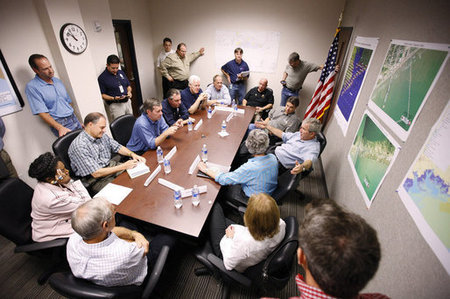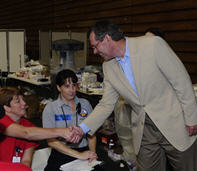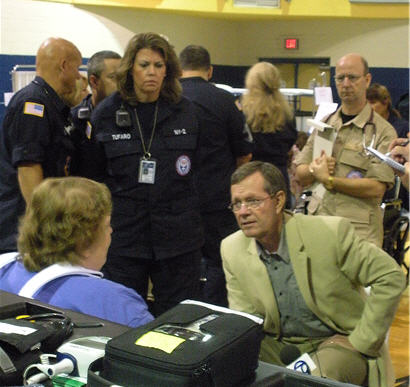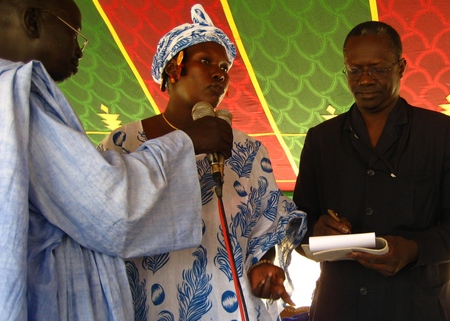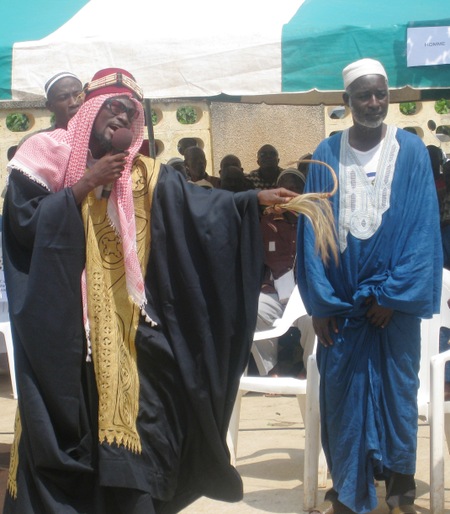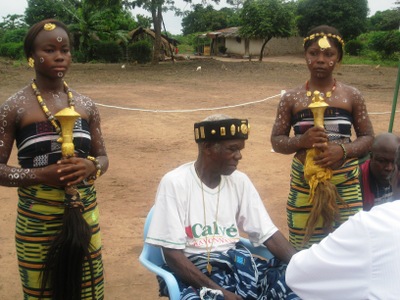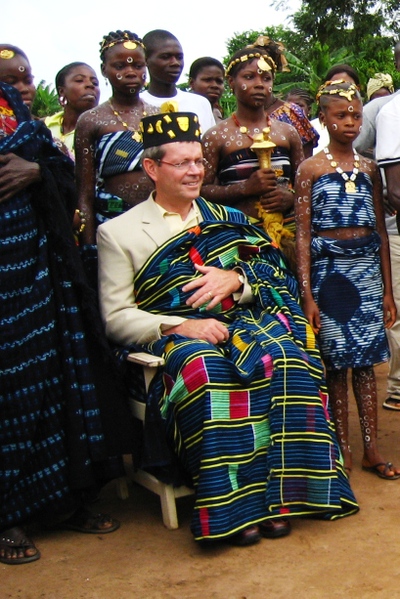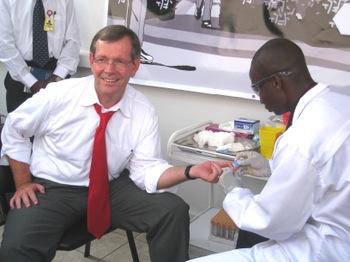Pakistan- Blog II
Note: August 19 and 20 I spent in Pakistan and wrote three postings about the experience on my way back from the region. Regrettably, in the interim, terrorists bombed the Marriott Hotel in Islamabad killing 53 people. I want to acknowledge that tragedy, express my condolences to the Pakistani people, and put my writings into proper time context.
The difference in security level for my visit to Pakistan and most other countries I visit was evident immediately. I arrived in Islamabad late in the evening. We were taken immediately to the Embassy where Ambassador Anne Woods Patterson invited me to stay. It felt good to sleep in a Marine guarded place.
Early the next morning, I met with the Ambassador Anne W. Patterson and the U.S. Embassy's Deputy Chief of Mission, Peter Bodde, for a country briefing. They confirmed what I already knew. Pakistan was at an historic juncture with President Musharraf having resigned the afternoon before.
My meeting with Minister of Health Sherry Rehman was surrounded by an atmosphere of political excitement and some intrigue. Minister Rehman is a significant player in the Pakistan Peoples Party (PPP). As I mentioned in my last blog, she had been deeply involved in events leading up to the resignation of President Musharraf. In addition to her role as Minster of Health, she is also the Communications Minister and hence a frequent public spokesperson for the party’s interests.
Minister Rehman was moving in and out of meetings involving the difficult task of holding together a governing coalition after the resignation of President Musharraf. She provided me with a certain amount of commentary on their progress as we moved throughout the day. I won’t repeat any of the specifics, because they were private conversations, but it was clearly not going to be easy.
I had similar conversations with Prime Minister Raza Gilani, whom I met with during the afternoon. Then in the evening, I had dinner with a group of leaders from throughout the government. Obviously, the President’s resignation the day before was the primary topic of conversation, and it was hard to resist focusing on their speculation. The buzz was the same; the coalition was going to be difficult to hold.
As it turns out, the governing coalition was not able to stay united. Ultimately, because the party of Nawaz Sharif, (whom Mr. Musharraf had ousted as Prime Minister in a 1999 coup), and the PPP was divided on a question related to reinstatement of some judges who had been fired by the former President. The worry was that failure of the coalition could send the country into early elections.
The PPP was able to engage another small party that allowed them to claim a coalition and win the election of President Asif Ali Zardari in the electoral college, which consists of the Pakistani Senate, National Assembly, and the Provincial Assemblies.
My timing was fortunate. Standing on the periphery, as an event of historic importance took place in a foreign government, is not likely going to happen to me again.
When events put control of a government into play, security concerns go up. Pakistan is a nation where rival parties routinely attack each other with bombs and other means of destruction. Islamabad is not as pronounced as Karachi that way. The security arrangements for my visit reflected the risk.
During my visit in Pakistan, a number of terrorist bombings occurred killing almost 200 people, and I read in the news about an unsuccessful attack on an American diplomat in one of our Consulate cities. Driving through Karachi on Wednesday of that week, the Consul General at Karachi, Kay Anske, who has spent many years in Pakistan on various assignments, began to tell me about the level of violence that routinely occurs there. Often, rival political factions battle each other. So, the violence is not always targeted at foreign governments.
As the Consult General and I drove thru Karachi, things just seem so normal here. It is hard to imagine a car bomb just exploding on an ordinary street on a regular day. I wondered out loud, about how much the threat of such violence inhibits the normal life of people?
My impression is that it doesn’t inhibit life much. In every society, there is a definition of normal. People just learn to live with the risks. I would not enjoy life in such a risky place, but the people of Pakistan (and our courageous diplomats) for the most part, don’t have a choice, and they just live with it.

